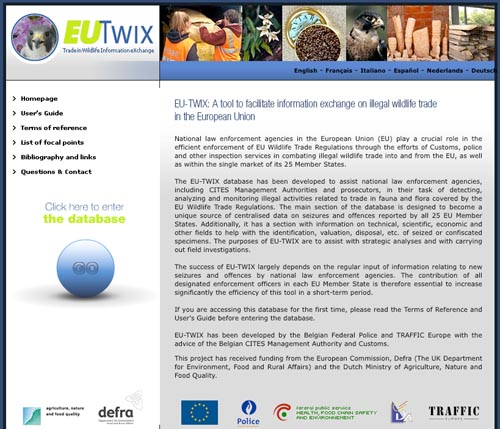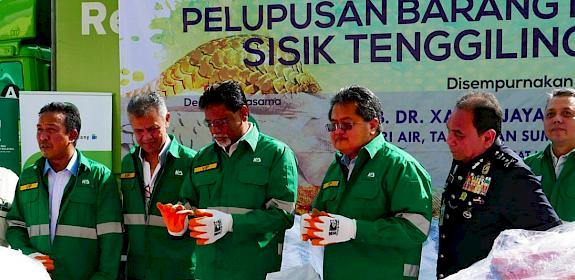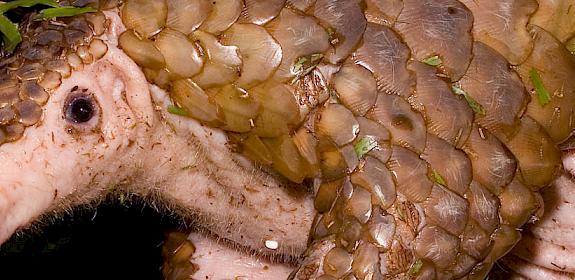Landmark for EU-TWIX
Cambridge, UK, 17 May 2010—EU-TWIX (European Union Trade in Wildlife Information eXchange), the internet-based tool to facilitate information exchange and co-operation between law enforcement officials across the EU has signed up its 500th member.

Introduced in 2005, EU-TWIX comprises a database of information on wildlife seizures in the EU and an associated mailing list that allows quick and efficient information sharing between designated enforcement officers from all 27 EU Member States, plus Croatia, Montenegro, Norway, Serbia, Switzerland and the Ukraine.
The mailing list has proved invaluable in rapid sharing of illicit wildlife trade information, triggering a number of seizures and subsequent prosecutions.
The database currently holds over 31,000 wildlife seizure cases plus information on forensics institutes, rescue centres and wildlife experts, and prices of wildlife specimens in trade.
At the recent Convention on International Trade in Endangered Species of Wild Fauna and Flora (CITES) meeting in Qatar, this March, the possibility of creating a global wildlife trade seizures database modeled after EU-TWIX was raised.
“The 500 membership mark and interest in a global EU-TWIX is testament to the growing value of the system, which is helping curb wildlife trafficking within the EU and at its external borders,” said Vinciane Sacré, EU-TWIX Administrator.
The EU is one of the world’s largest and most diverse markets for wildlife and wildlife products, worth millions of Euros each year, with trade ranging in everything from live animals and ornamental plants through to tropical woods, food, leather, ivory, tourist curios and wildlife-based medicines. However, a significant proportion of the wildlife trade is illegal and threatens the survival of wild species.
After EU membership expanded from 10 Member States in 1981 to 27 by 2007, so did the magnitude of the EU market for wildlife products. Furthermore, the abolition of internal border controls within the EU’s single market in the early 1990s created new avenues for transboundary wildlife trade crime.
“New smuggling methods and routes are actively sought out by offenders to avoid detection, making countries with weak border controls ideal targets,” said Rob Parry-Jones, Director of TRAFFIC Europe.
“Effective international co-operation between enforcement officers is the only way to keep one step ahead of the criminals.”
EU-TWIX is a joint initiative of the Belgian Federal Police, Customs and CITES Management Authority, and TRAFFIC Europe, who co-ordinate the system.
The project has received funding from the European Commission (DG Justice and DG Environment), Defra (The UK Department for Environment, Food and Rural Affairs), the Dutch Ministry of Agriculture, Nature and Food Quality, the ‘Ministère de l’Ecologie, de l’Energie, du Développement Durable et de l’Aménagement du Territoire’ (French Government), du ‘SPF Santé publique, Sécurité de la Chaîne alimentaire et Environnement’ (Belgian Government), and the Latvian Government.
Notes:
EU-TWIX: An internet tool to assist the EU in the fight against wildlife trade crime. (May 2007). Information leaflet published by: TRAFFIC Europe



